ICSOM at the Grammys
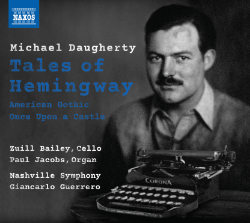 At the 59th annual Grammy awards on February 12, the Nashville Symphony’s album Daugherty: Tales Of Hemingway; American Gothic; Once Upon A Castle won awards in three categories: Best Classical Compendium, Best Classical Contemporary Composition, and Best Classical Instrumental Solo. The last two awards were specifically for Tales of Hemingway, featuring cellist Zuill Bailey. Nashville Symphony Music Director Giancarlo Guerrero conducted. It is the second straight win for Best Classical Compendium by a Nashville Symphony recording.
At the 59th annual Grammy awards on February 12, the Nashville Symphony’s album Daugherty: Tales Of Hemingway; American Gothic; Once Upon A Castle won awards in three categories: Best Classical Compendium, Best Classical Contemporary Composition, and Best Classical Instrumental Solo. The last two awards were specifically for Tales of Hemingway, featuring cellist Zuill Bailey. Nashville Symphony Music Director Giancarlo Guerrero conducted. It is the second straight win for Best Classical Compendium by a Nashville Symphony recording.
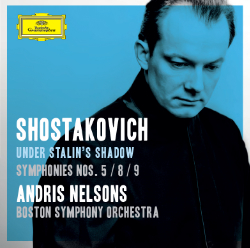 The Boston Symphony Orchestra, with its Music Director Andris Nelsons, also continued its winning streak. The latest installment in their project to record the music of Shostakovich from the period of his difficulties with Stalin and the Soviet regime (Note: See the May 2015 issue of Senza Sordino), Shostakovich: Under Stalin’s Shadow – Symphonies Nos. 5, 8 & 9 won the award for Best Orchestral Performance (as did the first installment). The recording was also nominated in the Best Engineered Classical Album category.
The Boston Symphony Orchestra, with its Music Director Andris Nelsons, also continued its winning streak. The latest installment in their project to record the music of Shostakovich from the period of his difficulties with Stalin and the Soviet regime (Note: See the May 2015 issue of Senza Sordino), Shostakovich: Under Stalin’s Shadow – Symphonies Nos. 5, 8 & 9 won the award for Best Orchestral Performance (as did the first installment). The recording was also nominated in the Best Engineered Classical Album category.
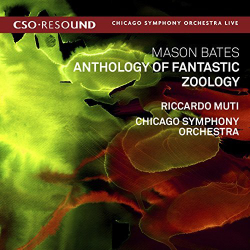 In the award for Classical Producer of the Year, winner David Frost was cited for, among other recordings, two albums by the Chicago Symphony Orchestra: Mason Bates: Anthology of Fantastic Zoology (which also was nominated in the category of Best Classical Contemporary Composition), and Schoenberg: Kol Nidre – Shostakovich: Suite on Verses of Michelangelo Buonarroti. Both albums were led by CSO Music Director Riccardo Muti.
In the award for Classical Producer of the Year, winner David Frost was cited for, among other recordings, two albums by the Chicago Symphony Orchestra: Mason Bates: Anthology of Fantastic Zoology (which also was nominated in the category of Best Classical Contemporary Composition), and Schoenberg: Kol Nidre – Shostakovich: Suite on Verses of Michelangelo Buonarroti. Both albums were led by CSO Music Director Riccardo Muti.
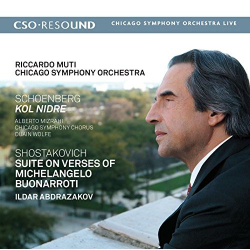 Other ICSOM orchestras whose recordings received nominations were: the New York Philharmonic and the San Francisco Symphony (Best Orchestral Performance); the St. Louis Symphony (Best Classical Instrumental Solo); and the Detroit Symphony Orchestra, the Houston Symphony Orchestra, the Milwaukee Symphony Orchestra, the Fort Worth Symphony Orchestra, and the San Francisco Ballet Orchestra (Classical Producer of the Year).
Other ICSOM orchestras whose recordings received nominations were: the New York Philharmonic and the San Francisco Symphony (Best Orchestral Performance); the St. Louis Symphony (Best Classical Instrumental Solo); and the Detroit Symphony Orchestra, the Houston Symphony Orchestra, the Milwaukee Symphony Orchestra, the Fort Worth Symphony Orchestra, and the San Francisco Ballet Orchestra (Classical Producer of the Year).
Early Contract Settlement in Detroit
The musicians of the Detroit Symphony Orchestra have ratified a new contract that will expire on September 6, 2020. The three-year agreement was reached nearly eight months before the expiration of the current CBA. The early settlement mirrors what happened in Detroit three years ago, when a smooth negotiation put to rest many of the lingering questions after the DSO’s six-month strike in 2010-11. This last negotiation again benefited from an atmosphere of trust, with the orchestra’s board and management seeming to be in sync with the musicians’ desire for a contract that would favor continued artistic growth. The city and the orchestra both are benefiting from a period of renewal. In the last five years more than 30 new musicians have been hired with a busy audition calendar.
Under the new contract, the season length will be stabilized at 42 work weeks, which includes four paid vacation weeks. Weekly scale plus EMG will rise to $2,288 in the third year of the contract, and the addition of a stipend during the ten remaining weeks will bring annual base compensation to nearly $99,000. Some minor adjustments were made to working conditions and the musicians agreed to pay a greater portion of the increase in health insurance premiums if costs rise more than 5% annually. Optional non-orchestral work such as chamber music and educational services continues to be paid extra at negotiated rates.
In fiscal year 2016, the DSO saw a small surplus of $130,000 on its $28.8 million budget. The orchestra is aiming to raise $125 million toward its endowment by 2023 to achieve a greater level of financial stability. A July 2017 tour of eleven cities in Japan and China will mark one of the last major events of Leonard Slatkin’s ten-year term as music director. He has announced that the 2017-18 season will be his last with the title.
Violins of Hope
The Jacksonville Symphony presented a concert on January 28 featuring instruments recovered from the Holocaust and restored by Israeli luthier Amnon Weinstein. Jay Stein, a former Symphony Board President, along with his wife, Deanie Stein, and his business, Stein Mart, sponsored the concert, titled “Violins of Hope”. It was presented in conjunction with the exhibition Anne Frank: A History for Today and a series of events, called Voices of Hope, running through May.
After WWII, Weinstein’s father—who immigrated to Palestine in 1938 and opened a violin shop in Tel Aviv—learned that 400 of his family members had been murdered in the Holocaust. Amnon, after becoming a very successful luthier, has dedicated his life to locating and restoring violins played by Jewish musicians during the Holocaust, in memory of those family members whom he never knew.
“Performing in ‘Violins of Hope’ was a very powerful and moving experience,” expressed violinist Piotr Szewczyk , whose grandparents survived imprisonment by the Nazis during the war. “Playing the instruments that survived the Holocaust and now, after restoration, making music and bringing people joy again is a powerful symbolic act of defiance against the regime that brought so much suffering and death during WWII. Each time those instruments are being played is another victory for good prevailing over evil, and a lasting remembrance of the people who have perished. The presence of Amnon Weinstein and his son [Avshalom] at the concert gave another layer of significance to the event. The poignant and dramatic stories he and other speakers have shared made the music making even more powerful for us as performers, and for the audience.”
Another Jacksonville Symphony member, violinist Lois Elfenbein Gosa, had a great aunt Eta whose husband and three children were killed by the Nazis. “I had been told that Eta’s husband, Israel, had played the violin. For me, to play on a restored violin offered a chance for the violin’s voice to sing with freedom and hope.”
Intrigued after learning of the project, violist Jorge Pena began reading up on it. “At the first rehearsal, to my surprise they announced that they also brought one viola, so I readily volunteered to play it,” Jorge shared. “Each of these instruments has an amazing story attached to it. . .Their stories and the project’s name come from the book by the same name. When you own [an old] instrument you can’t but wonder how . . . many stories they would tell us if they could. Yet here I had the privilege to play an instrument in a concert of hope with a unique but dark story. The privilege to make this instrument sing again at the concert was only made more profound by the sounds of the rest of violins of hope. The concert [ended up being] one of the most memorable concerts of my twenty-year career.”
His daughter, Gabriela Pena-Kim, had the opportunity to travel with Avshalom to demonstrate many of the violins at various schools. She said, “ It was a rare, unforgettable opportunity to be able to interact with a living piece of history, and I was honored to be a part of it. To listen to the stories of suffering that accompanied each instrument, as well as the hope it provided, truly brought tears to my eyes. It is a reminder of history, of humanity, of hardship, of community and the incredible power of music.”
Creating a Tradition in Florida
In December, the Florida Orchestra Musicians Association hosted a Toys for Tots drive, during which they collected nearly 1,000 toys for needy children in the Tampa Bay area.
It was the second toy drive held by the musicians, who decided they wanted to begin an annual tradition of giving back to the community in 2015, and chose to partner with the Toys for Tots Foundation to be able to help local children and families during the holidays.
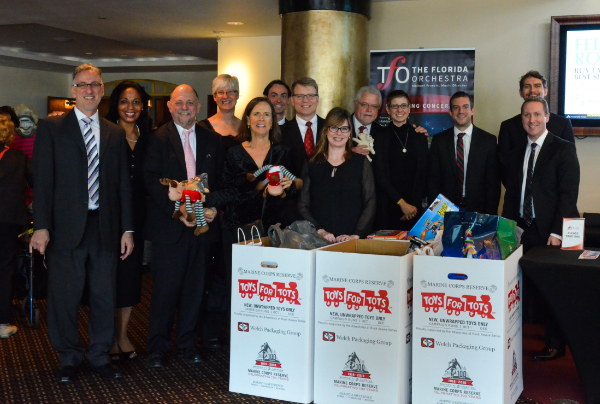
(L to R) TFO musicians Fred Gratta, Mary Corbett, Warren Powell, Alison Heydt, Barbara Rizzo, Jeff Ridgeway, John Shaw, Anna Kate Mackle, Lowell Adams, Sarah Shellman, Andrew Karr, Jeffrey Stephenson, (back) Casey Jones
Photo credit: Todd Beatty
The staff and Board of Directors of The Florida Orchestra enthusiastically participated, and helped promote the drive on the orchestra’s website, Facebook page, and newsletter. The musicians also invited audience-goers to donate, and spread the word by announcing the drive from the stage before all concerts the previous month and promoting it on the musicians’ Facebook page (@Florida Orchestra Musicians Association). Donation boxes were placed in the lobby for every performance in December, and audience members typically brought enough toys to fill between 1–4 boxes each performance.
In all, 18 large cartons were filled with toys, books, games, stuffed animals and sports equipment for all ages, more than double the amount that was collected the previous year.
By hosting this annual event, the musicians’ mission was to bring together musicians, staff, and Board and audience members in a common goal: to help make the holidays brighter for the most vulnerable in the community. The willingness of so many people to come together and give so generously speaks to the extent to which the musicians and their toy drive have touched hearts throughout the community.
Milwaukee’s New Hall
The Milwaukee Symphony Orchestra announced its intention to create a new dedicated symphony venue at the current Warner Grand Theater, located in downtown Milwaukee. The Grand Theater is a beautiful old movie palace, built in 1930. Vacant since 1995 and in disrepair, its extraordinary acoustics still promise an opulent orchestral home.
Funding for the real estate project is through a public/private partnership, with grants from the City of Milwaukee, the federal government (for historic place restoration) and many individual donations. The MSO is more than halfway to its funding goal of $120 million, of which $80 million are for renovation and expansion of the building. Supporters of the project include Milwaukee’s mayor, county executive, the Metropolitan Milwaukee Association of Commerce, some major corporations, and perhaps most importantly, the Grand Avenue Mall across the street from the theater. Seen as a win-win for the West Town portion of Milwaukee’s downtown, the new hall promises a revitalization of a somewhat depressed neighborhood.
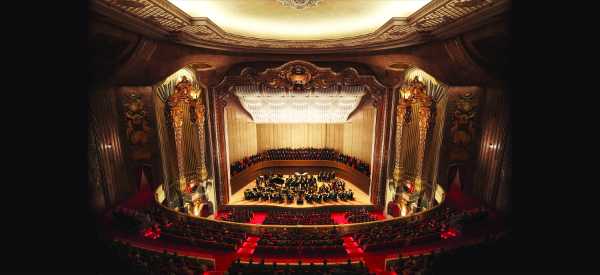
An artist’s rendering of the renovated theater
Photo credit: Courtesy of the Milwaukee Symphony Orchestra
MSO supporters are excited about the project because it means more scheduling autonomy for the organization, and more revenue generation from MSO performances as well as hall rentals. Many Milwaukeeans see the project as “investing in a broader vision for downtown.”
Substituting with Pride
The San Francisco Symphony announced that it will perform a special concert, “Symphony Pride”, on April 4 at Davies Symphony Hall, with music director Michael Tilson Thomas and Broadway star Audra McDonald. It is a benefit concert in support of the Bay Area LGBTQ community. Originally the SFS was scheduled to perform two concerts in Winston-Salem, North Carolina as part of an east-coast tour. But these concerts were canceled by the Symphony in response to the legislation adopted by North Carolina—the Public Facilities Privacy and Security Act—which excludes sexual orientation from the criteria eligible under state anti-discrimination law. The law is popularly known as the “bathroom bill” because it also nullified a Charlotte ordinance that would have protected transgendered people who use the bathroom conforming to their gender identity.
This concert reflects the San Francisco Symphony’s support of, and commitment to, diversity and inclusion for all. The program will include music by Lou Harrison, Meredith Monk, John Cage, Leonard Bernstein, Aaron Copland, and Gustav Mahler. Proceeds from the concert will benefit Larkin Street Youth Services (a non-profit supporting LGBTQ youth), the Transgender Law Center in Oakland, the National Center for Lesbian Rights, and The Trevor Project (which provides crisis intervention and suicide prevention to LGBTQ youth).
Chicago Concludes European Tour
The Chicago Symphony Orchestra recently completed its sixtieth international tour: a seven-city, five-country journey during which it performed eleven concerts for audiences across Europe. More than 150 members of the international press documented Riccardo Muti’s and the Orchestra’s return to renowned halls, as well as its debut at newly constructed venues.
The concert programs included Hindemith’s Concert Music for String Orchestra and Brass, Elgar’s In the South (Alassio), Mussorgsky’s A Night on Bald Mountain and Pictures from an Exhibition, Catalani’s Contemplazione, Strauss’s Don Juan, and Tchaikovsky’s Fourth Symphony.
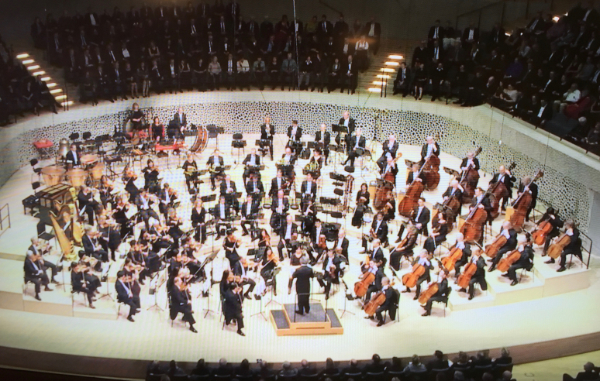
The CSO performing in the new Elbphilharmonie in Hamburg
Photo credit: John Hagstrom
The tour began in France with a performance at the Philharmonie de Paris. This marked the CSO’s first appearance in the hall designed by architect Jean Novel. Critic Marie-Aude Roux (Le Monde) wrote, “With round and blended string playing capable of endless nuance, colorful and contrasting woodwinds, top-flight percussion and brass rivaling a full pipe organ in range, the Chicago Symphony Orchestra once again proved why it’s the stuff of legend, an epic written, for ten years running now, by the baton of Riccardo Muti.” The Orchestra then traveled to Hamburg, Germany, for two concerts at the state-of-the-art Elbphilharmonie as part of the hall’s opening-week festivities. The CSO had the honor of being the first foreign orchestra to perform in the new hall.
For the third stop of the tour, the orchestra traveled to Aalborg, Denmark for two concerts at the Musikkens Hus, which opened in 2014. Next was Milan, where Muti and the CSO made a highly anticipated return to Teatro alla Scala, and where Muti was music director from 1986 to 2005. As Muti took the stage for the first of two concerts, cries of “Bentornato!” (“Welcome back!”) could be heard.
The Orchestra then traveled to Vienna for two concerts at the historic Musikverein. The sixth stop on the tour was Baden-Baden, Germany for only one program; and Frankfurt was the final stop on this European tour with a concert at the city’s Alte Oper. As one critic put it, “The CSO does not only stand for a great tradition. It also represents a present that wants to tell us ‘it is still there, that great, other America.’”
Note: The “Violins of Hope” newslet presented here is an expanded version of what appears in the print edition of Senza Sordino.






[…] While the Violins of Hope have been featured with other ICSOM orchestras—including Jacksonville (Note: See “Newslets” in the March 2017 issue), Charlotte, Alabama, and Cleveland—their residency in Nashville was the first in which the […]